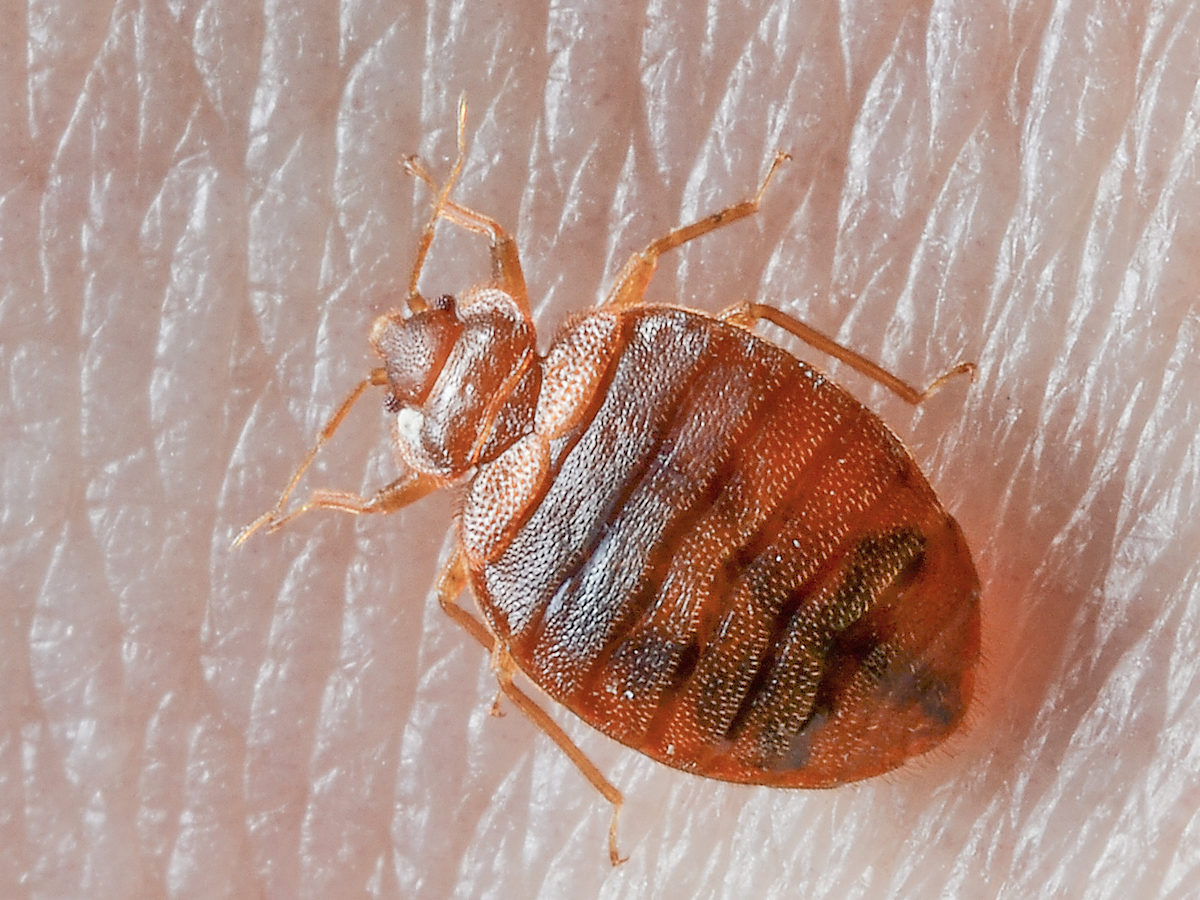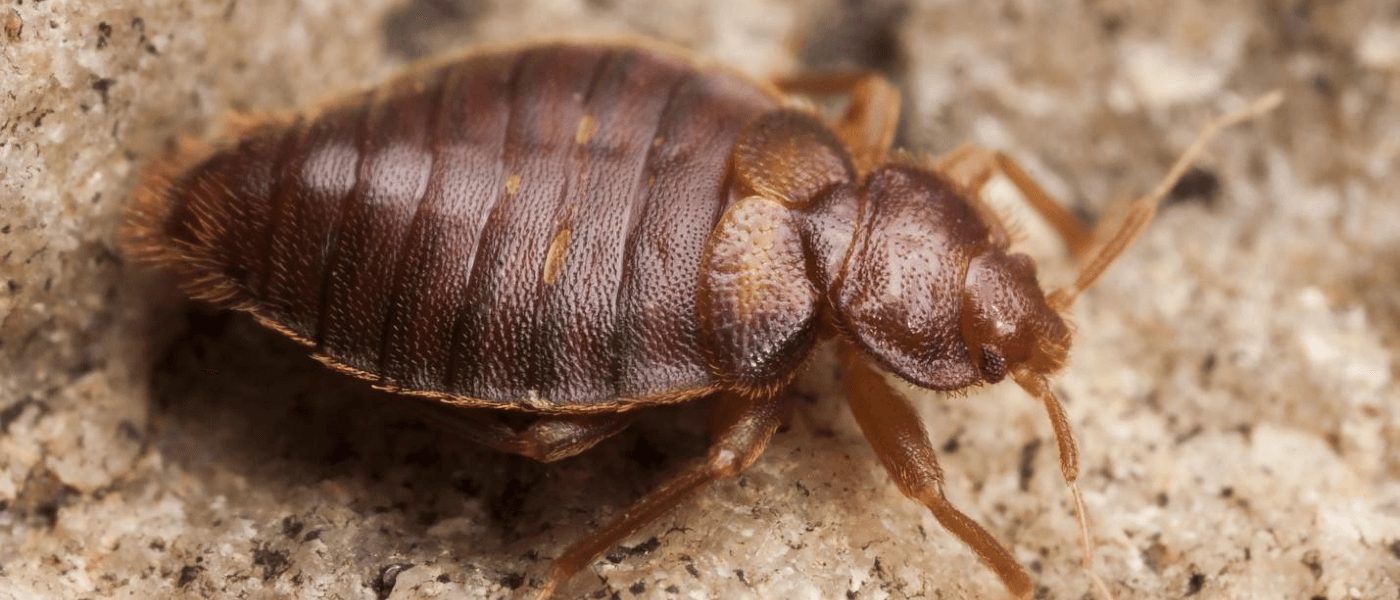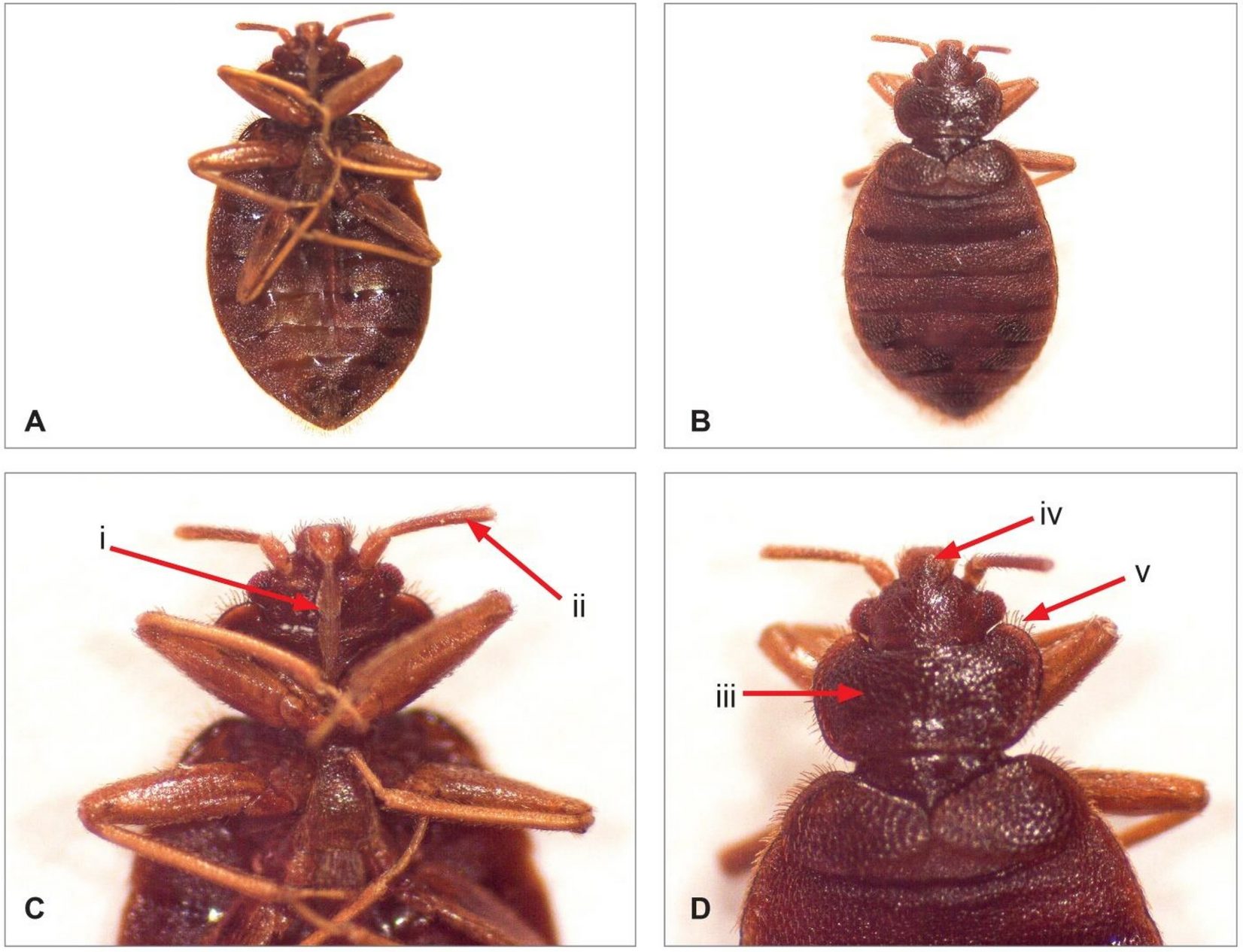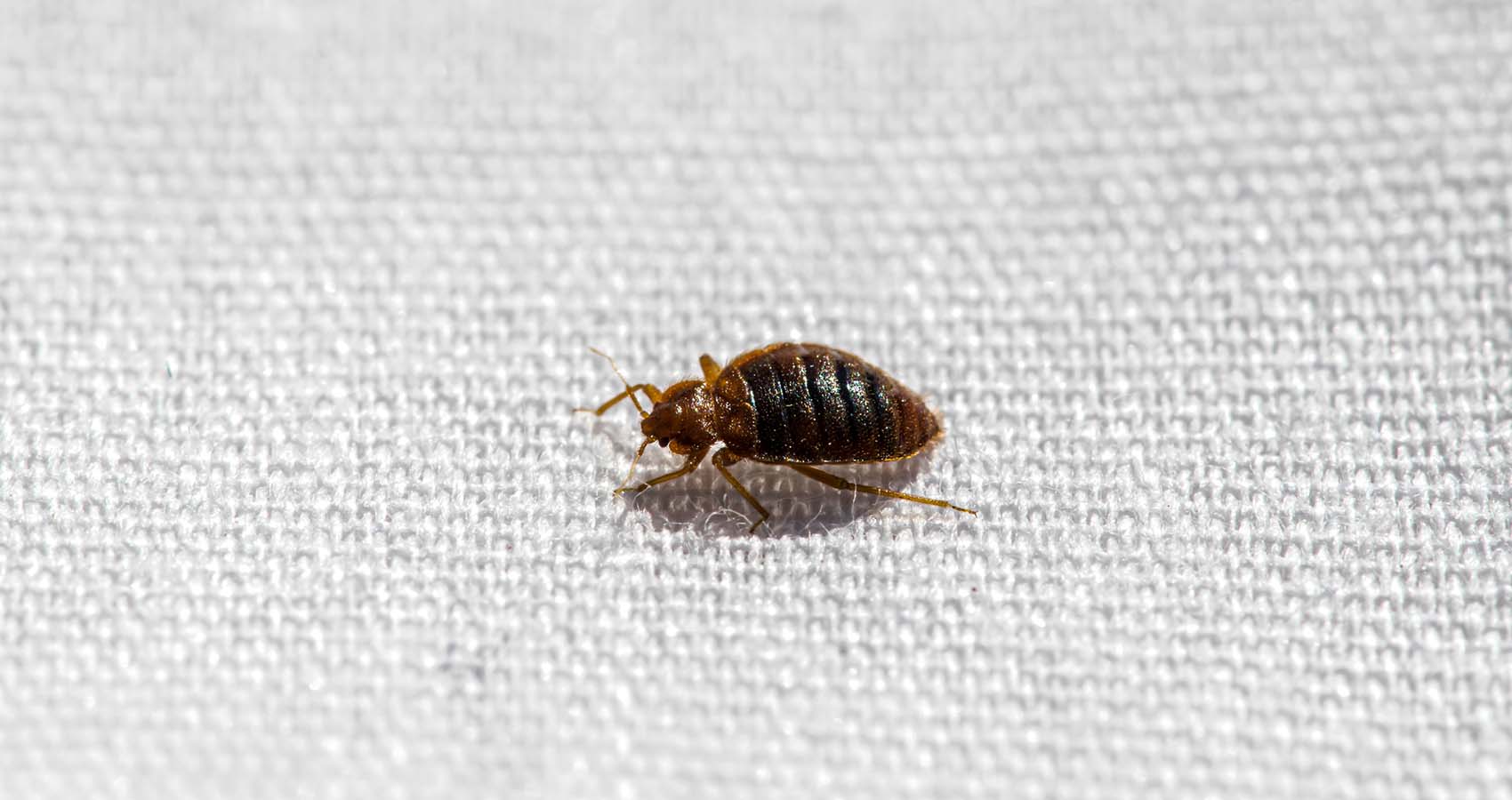As a homeowner, I’m sure you’ve asked yourself, “How long can bed bugs live outside?” Well, the answer is not as simple as it may seem. In this article, I’ll be exploring the factors that determine the longevity of bed bugs in outdoor environments, and uncovering the truth about how long bed bugs can survive outside.
What are Bed Bugs?

Bed bugs are small, oval-shaped, wingless insects. They are reddish-brown in color, and range in size from 1mm to 7mm (roughly the size of Lincoln’s head on a penny). Bed bugs feed on human and animal blood, and can survive without a blood meal for up to 18 months in ideal conditions.
They are most commonly found in beds and furniture, but can also be found in cracks and crevices in walls, floors and other furniture. They can enter a home through luggage, second-hand furniture, clothing or other items that have been in contact with infested areas.
| Appearance | Size |
|---|---|
| Small, oval-shaped, wingless insects | 1mm to 7mm (roughly the size of Lincoln’s head on a penny) |
Bed bugs are a nuisance and can cause physical and psychological distress. They can also spread diseases such as Hepatitis B, Chagas disease, and other diseases.
What Conditions Are Required for Bed Bugs to Survive Outside?

Bed bugs can survive outside, but they require certain conditions to do so. These conditions include:
- A warm temperature, such as 70-90°F
- Humidity that is not too high, typically between 40-60% relative humidity
- A dark environment, such as inside a crack or crevice
- Access to a host, such as a human or animal, to feed on
If these conditions are not met, bed bugs will not be able to survive outside.
How Long Can Bed Bugs Live Outside?

Bed bugs are resilient pests that can survive without a host for a certain amount of time. But how long can bed bugs live outside? In ideal conditions, bed bugs can live up to a year without a host. This is because they are able to enter a state of dormancy when food is not available and can go without food for months. Bed bugs can survive temperatures as low as 46 degrees Fahrenheit and as high as 113 degrees Fahrenheit. It is also possible for bed bugs to survive outdoors in colder months if they are able to find shelter and a food source, such as birds or rodents.
Bed bugs can live for days on a human host, so it is possible for them to travel from one home to another on clothing or bags. If bed bugs are brought into a home, they can quickly start to breed and infest an area. It is important to take steps to prevent bed bugs from entering your home and to quickly take action if an infestation is discovered.
Factors Affecting Bed Bugs’ Longevity Outside

Bed bugs, while they do not live exclusively in beds, require blood to survive and reproduce. This means they must feed on a host, usually humans, to stay alive. As a result, if they are not able to feed on a host, they will not be able to survive for very long outside. The outside environment has several factors that can affect the longevity of bed bugs.
Temperature
The temperature outside is a major factor in how long bed bugs can survive. If the temperature is too cold, the bed bugs will not survive. Bed bugs typically require temperatures above 50°F (10°C) to survive for more than a few days outside. If the temperature drops below 50°F, bed bugs will likely die within a few days.
Humidity
Humidity is another factor that can affect the longevity of bed bugs outside. Bed bugs need appropriate humidity levels to remain alive and reproduce. If the humidity is too low, the bed bugs will die. Generally, bed bugs prefer humidity levels between 70% and 90%. If the humidity is below 70%, the bed bugs will likely die within a few days.
Sunlight
Bed bugs are sensitive to sunlight, and can die within a few minutes of direct sunlight. This means that if bed bugs are in an area that receives direct sunlight, they will likely not survive for more than a few minutes.
Food
Without food, bed bugs will not survive for more than a few days. Bed bugs need to feed on a host, usually humans, to survive and reproduce. If bed bugs are not able to feed on a host, they will not be able to survive for very long outside.
In conclusion, bed bugs typically require temperatures above 50°F (10°C), humidity levels between 70% and 90%, and a host to feed on to survive outside. If any of these conditions are not met, the bed bugs will likely not survive for very long.
How Far Can Bed Bugs Travel Outside?

Bed bugs are capable of traveling up to 100 feet and can jump up to four feet high. This is why they can spread so quickly in apartments and multi-unit dwellings. They can also move in and out of rooms through cracks in walls and floors, as well as through doorways and ventilation shafts. They can even travel between rooms on people’s clothing, shoes, and bags. Bed bugs can also be spread through the transport of furniture, clothing, bedding, and other household objects. They can also travel through vents and baseboards, where they can easily hide and wait for a human host.
Where Do Bed Bugs Live Outside?
Bed bugs are a type of pest that are known to live and reproduce in indoor environments including homes, apartments, and hotels. But what about outside? Where do bed bugs live outside?
In general, bed bugs prefer the safety and warmth of an indoor environment, but they can still survive in outdoor areas. Bed bugs can be found in outdoor areas such as cracks in concrete walls, under rocks, and in piles of leaves, grass, and other organic material.
Bed bugs can also be found living in outdoor furniture, like that found in patios and decks. While bed bugs are not typically found in large numbers outdoors, it is possible for them to establish a colony in an outdoor area if they are not removed.
Bed bugs can also be found living in and around public transportation stops, such as bus stops and train stations. They can also be found in public parks and other outdoor recreational areas.
Bed bugs are also known to inhabit cars, trucks, and other vehicles. Since these areas can provide a warm, safe environment, they can be attractive to bed bugs.
Overall, bed bugs are not typically found in large numbers in outdoor areas, but they can survive in the right conditions. If you suspect that there may be bed bugs living outside your home or business, it is important to contact a professional pest control company to assess the situation and treat the area.
How to Prevent Bed Bugs from Entering Your Home
To prevent bed bugs from entering your home, it is important to take certain precautionary measures.
Check for Bed Bugs Before Bringing Items Into Your Home
Before bringing any items into your home, it is important to check for bed bugs. Bed bugs are small insects that can hide in furniture, bedding, clothing, luggage and other items. If you suspect an item may be infested, it is best to leave it outside and not bring it into your home.
Seal Cracks and Gaps
Bed bugs can enter your home through cracks and gaps around windows, baseboards, and door frames. Sealing these areas can help prevent them from entering your home.
Keep Your Home Clean
It is important to keep your home clean and clutter-free. This makes it harder for bed bugs to hide and reproduce. Vacuum your floors and furniture regularly and dispose of the vacuum bag immediately.
Use Pesticides
Pesticides can help prevent bed bugs from entering your home. Use an insecticide designed specifically for bed bugs and follow the instructions on the label.
Wash Your Bedding Regularly
Wash your bedding and clothing regularly and in hot water to help prevent bed bugs from entering your home.
By taking these steps, you can help prevent bed bugs from entering your home and reduce the chances of an infestation.
Frequently Asked Questions
How long can bed bugs survive outside their host?
Bed bugs can survive for several months without a host. They can survive in temperatures ranging from nearly freezing to 122°F. They can survive in a variety of temperatures and humidity levels, as long as their environment is not too dry or too wet. Bed bugs can also survive for months without feeding. However, they usually require a blood meal every 5-10 days in order to reproduce.
How far can bed bugs travel outside their host?
Bed bugs are capable of travelling several feet in one night, although typically they remain close to the host. Bed bugs can travel up to 20 feet in a night, but more commonly they stay within 8 feet. Additionally, bed bugs can climb walls and other surfaces in order to reach their host, allowing them to travel further than 8 feet.
Where do bed bugs typically live outside their host?
Bed bugs typically live in cracks and crevices near their host, such as in mattress seams, box springs, bed frames and headboards. They also hide in nearby furniture, including night stands, dressers, couches and chairs. Bed bugs can also live in other dark places such as behind baseboards, electrical switch plates and picture frames. Outdoors, bed bugs can be found in cracks in sidewalks, walls and other areas where people rest.
What environmental conditions are best for bed bugs to survive outside their host?
Bed bugs prefer temperatures between 70-80°F and relative humidity above 50%. They can survive in cooler conditions, such as those found in attics, basements and crawlspaces, but their lifespan is drastically shortened. They also require a good source of food, such as human blood, to survive. Without these environmental conditions, bed bugs can survive outside a host for only a few days.
What are the risks of allowing bed bugs to live outside their host?
Allowing bed bugs to live outside their host can lead to an increased risk of infestation in the area. Bed bugs can spread quickly, and they can travel to other parts of the home, other dwellings, and even other buildings. Bed bugs can also spread through contact with infested items, such as mattresses, furniture, and bedding. Additionally, bed bugs can be difficult to detect and treat, making them a nuisance for homeowners.
Conclusion
Bed bugs can survive in a variety of conditions, but the cold and dry environment of winter is the most difficult for them to survive in. Even in the coldest winter months, bed bugs can survive for up to a few weeks outside, though the ability to find food and shelter will determine their survival rate. The warmer and more humid the environment, the longer bed bugs can survive outside. It is important to take steps to prevent bed bugs from entering your home, such as using caulk and other preventive measures to seal off entry points.
It is also important to be aware of the signs of bed bug infestations and to take action if an infestation is suspected. Early detection is key in preventing an infestation from becoming more serious and difficult to eradicate. Additionally, professional pest control services can help to identify and eliminate bed bug infestations quickly and safely.
Ultimately, the key to preventing an infestation is to be aware of the signs of bed bugs and to take preventative action when needed. With these steps, you can ensure that you and your family stay bed bug-free.
- Environmental Protection Agency – Information from the US Environmental Protection Agency on bed bugs.
- Centers for Disease Control and Prevention – Answers to frequently asked questions about bed bugs from the Centers for Disease Control and Prevention.






